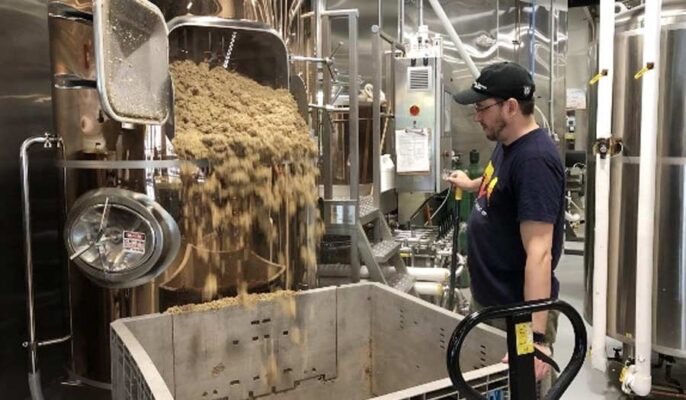Buying and maintaining a brewhouse can be a significant investment for any brewery. A brewhouse is the heart of a brewery, and it’s essential to choose the right equipment for your needs. In this article, we’ll take a closer look at how to buy and maintain a brewhouse, including what to consider when choosing equipment, how to maintain your brewhouse, and how to extend the life of your equipment.
Choosing the Right Brewhouse
When it comes to choosing a brewhouse, there are several factors to consider. These include the size of your brewery, the type of beer you plan to produce, and your budget. Here are some tips to help you choose the right brewhouse for your needs.
Consider Your Production Needs
The size of your brewhouse will depend on your production needs. If you’re a small brewery, you may only need a 3- or 5-barrel brewhouse. Larger breweries may need a 10-barrel brewhouse or larger. It’s important to choose a brewhouse that can handle your production needs, but it’s also important to consider the cost of the equipment and the space required.
Choose the Right Configuration
Brewhouses come in several configurations, including three-vessel, four-vessel, and five-vessel configurations. Three-vessel systems are the most common and include a mash tun, a lauter tun, and a kettle. Four- and five-vessel systems include additional tanks, such as a hot liquor tank or a whirlpool tank. The configuration you choose will depend on your brewing process and the type of beer you plan to produce.
Consider Automation
Brewhouses can be fully automated or semi-automated. Fully automated systems are more expensive but offer more control over the brewing process. Semi-automated systems are less expensive but require more manual intervention. Consider the level of automation you need based on your brewing process and the level of control you want over your beer.
Check for Quality
When choosing a brewhouse, it’s essential to look for quality equipment. Choose a reputable manufacturer with a good track record in the industry. Check for reviews and recommendations from other brewers to ensure you’re getting a high-quality brewhouse.

Maintaining Your Brewhouse
Once you’ve chosen a brewhouse, it’s essential to maintain it properly. Proper maintenance can help extend the life of your equipment and ensure that your beer is of the highest quality. Here are some tips for maintaining your brewhouse:
Keep Your Equipment Clean
Proper cleaning is essential for maintaining your brewhouse. Clean all tanks, pipes, and valves regularly to prevent buildup and contamination. Use a high-quality cleaning solution and follow the manufacturer’s instructions for cleaning your equipment.
Check for Leaks
Check your equipment regularly for leaks. Leaks can cause damage to your equipment and can also lead to contamination. Replace any damaged or worn gaskets or seals immediately to prevent leaks.
Maintain Proper Temperature
Temperature control is essential for brewing high-quality beer. Make sure your equipment is properly insulated and that your cooling system is working correctly. Monitor the temperature of your beer throughout the brewing process to ensure that it’s within the desired range.
Calibrate Your Equipment
Calibrate your equipment regularly to ensure that it’s working properly. This includes temperature gauges, flow meters, and other equipment. Follow the manufacturer’s instructions for calibrating your equipment, or hire a professional to do it for you.
Extending the Life of Your Brewhouse
Brewhouses can be a significant investment, and it’s essential to extend the life of your equipment as much as possible. Here are some tips for extending the life of your brewhouse:
Conduct Regular Inspections
Regular inspections can help you identify and address any issues with your equipment before they become major problems. Inspect your equipment regularly for signs of wear and tear, damage, or other issues. Replace any damaged or worn parts immediately to prevent further damage.
Follow the Manufacturer’s Recommendations
Follow the manufacturer’s recommendations for operating and maintaining your equipment. This includes recommended cleaning procedures, maintenance schedules, and replacement parts. Following these recommendations can help extend the life of your equipment and prevent costly repairs or replacements.
Keep Records
Keeping records of your maintenance and repair activities can help you identify trends and potential issues with your equipment. Use a spreadsheet or other tracking tool to record your maintenance activities, including cleaning, inspections, and repairs. Use this information to identify areas where you can improve your maintenance procedures and extend the life of your equipment.
Train Your Staff
Make sure your staff is properly trained on how to operate and maintain your brewhouse equipment. This includes proper cleaning procedures, calibration, and other maintenance tasks. Provide ongoing training and support to ensure that your staff is equipped to handle any issues that arise with your equipment.

Conclusion
Purchasing and maintaining a brewery is a major investment for any brewery, but it is critical to producing high-quality beer.
When choosing a brewhouse, consider your production needs, configuration, level of automation and quality.
To maintain your brewhouse, keep equipment clean, check for leaks, maintain proper temperature and calibrate your equipment.
Extend the life of your brewhouse by performing regular inspections, following manufacturer’s recommendations, keeping records and training your staff. By following these tips, you can ensure your brewing equipment is running at its best and your beer is of the highest quality.




